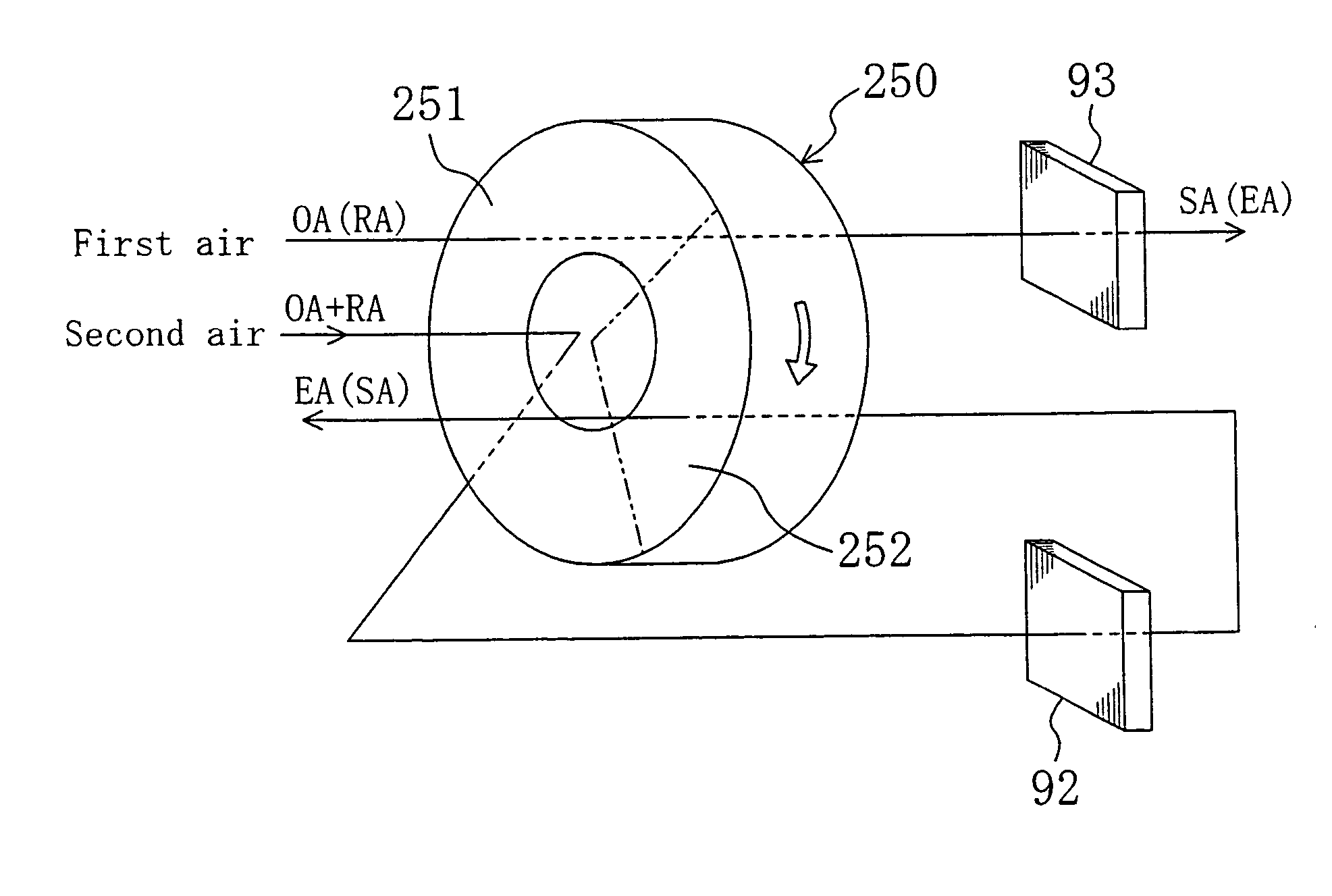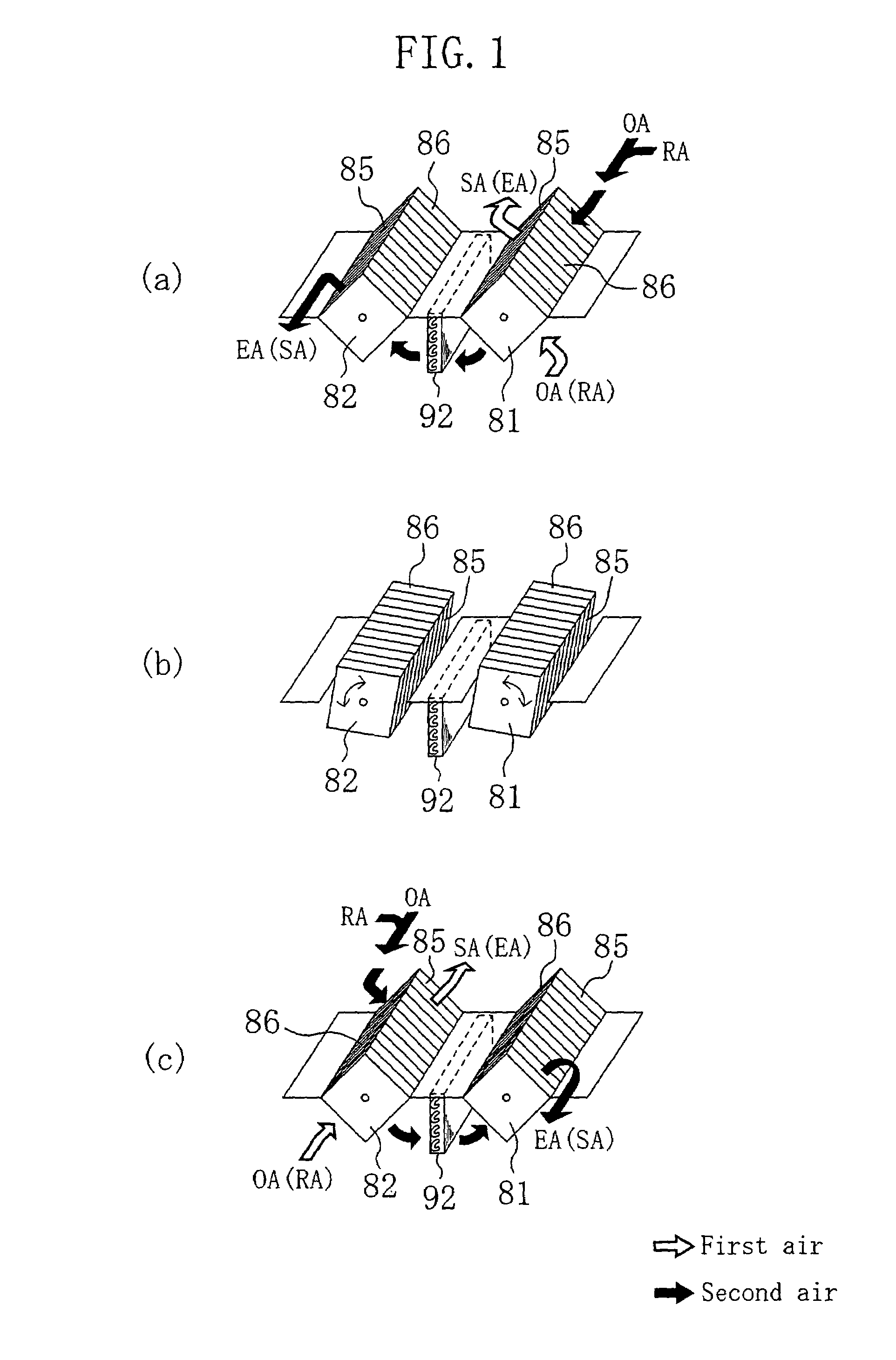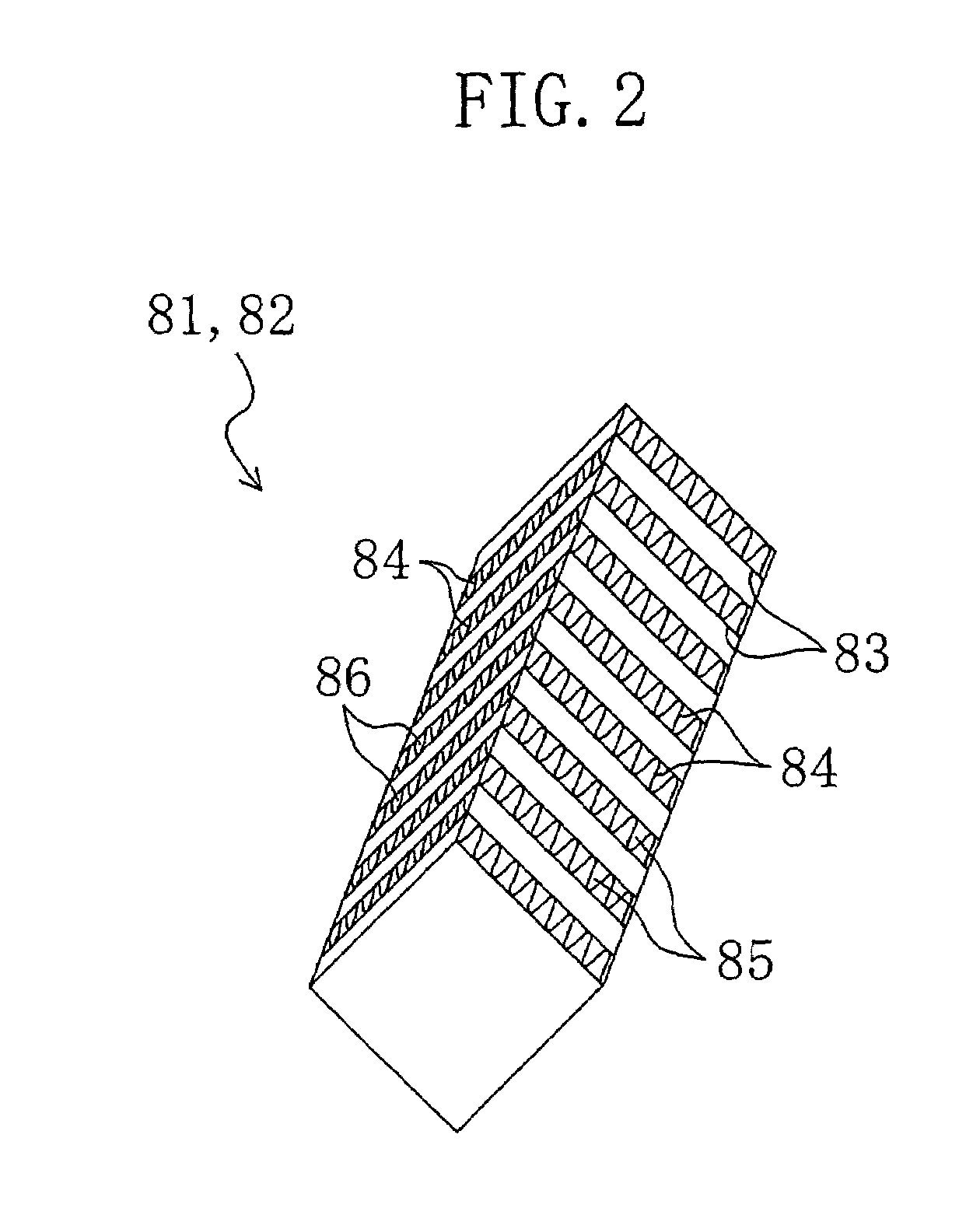Humidity controller
a humidity controller and humidity control technology, applied in domestic cooling devices, heating types, separation processes, etc., can solve the problems of insufficient reduction of relative humidity of room air introduced into the adsorbing rotor after heating, inability to secure an amount of moisture (i.e., an amount of humidification) desorbed from the adsorbent, and inability to achieve sufficient humidification performance, etc., to suppress an increase in the first air temperature, the effect of high efficiency of the humidity control
- Summary
- Abstract
- Description
- Claims
- Application Information
AI Technical Summary
Benefits of technology
Problems solved by technology
Method used
Image
Examples
embodiment 1
[0057]A humidity control apparatus is formed to carry out a dehumidifying operation for supplying dehumidified and cooled outside air into a room and a humidifying operation for supplying heated and humidified outside air into the room while switching between the operations. The humidity control apparatus includes two adsorbing elements (81, 82) and carries out an operation of a so-called batch type.
[0058]As shown in FIG. 1, the respective adsorbing elements (81, 82) are formed into shapes of square columns. Specific structures of the adsorbing elements (81, 82) will be described later. The two adsorbing elements (81, 82) are arranged on the left and right and housed in a casing outside the drawing.
[0059]To put it concretely, in the casing of the humidity control apparatus, the first adsorbing element (81) is disposed on the right side and the second adsorbing element (82) is disposed on the left side. These adsorbing elements (81, 82) are disposed such that their longitudinal dire...
embodiment 3
[0105]A humidity control apparatus according to the invention includes one adsorbing element (200). The humidity control apparatus takes in the first air and the second air and carries out a dehumidifying operation or a humidifying operation while alternately carrying out a first operation and a second operation.
[0106]As shown in FIG. 4, the adsorbing element (200) of the present embodiment is formed by alternately laminating rectangular flat plate members (83) and corrugated plate members (84). The adsorbing element (200) is formed similarly to that of the embodiment 1 except its entire shape.
[0107]To put it concretely, the adsorbing element (200) is formed in a shape of a rectangular parallelepiped which is long in a lateral direction and rather flat as a whole. In this adsorbing element (200), the flat plate members (83) and the corrugated plate members (84) are laminated in a longitudinal direction. Humidity-control-side passages (85) are open in front and back faces in FIG. 4 a...
fourth embodiment
[0129]A humidity control apparatus according to the invention includes one adsorbing element (250). The humidity control apparatus takes in first air and second air and carries out an adsorbing operation and a regenerating operation with regard to one adsorbing element (250) in parallel with each other. In other words, in the humidity control apparatus of the present embodiment, dehumidification of air by the adsorbing element (250) and regeneration of adsorbent of the adsorbing element (250) are carried out simultaneously in parallel.
[0130]As shown in FIG. 6, the adsorbing element (250) of the embodiment is formed in a shape of a doughnut or a thick-walled cylinder. In the adsorbing element (250), humidity-control-side passages (85) and cooling-side passages (86) are defined alternately in a circumferential direction of the adsorbing element (250). The humidity-control-side passages (85) pass through the adsorbing element (250) in an axial direction of the adsorbing element (250). ...
PUM
 Login to View More
Login to View More Abstract
Description
Claims
Application Information
 Login to View More
Login to View More - R&D
- Intellectual Property
- Life Sciences
- Materials
- Tech Scout
- Unparalleled Data Quality
- Higher Quality Content
- 60% Fewer Hallucinations
Browse by: Latest US Patents, China's latest patents, Technical Efficacy Thesaurus, Application Domain, Technology Topic, Popular Technical Reports.
© 2025 PatSnap. All rights reserved.Legal|Privacy policy|Modern Slavery Act Transparency Statement|Sitemap|About US| Contact US: help@patsnap.com



